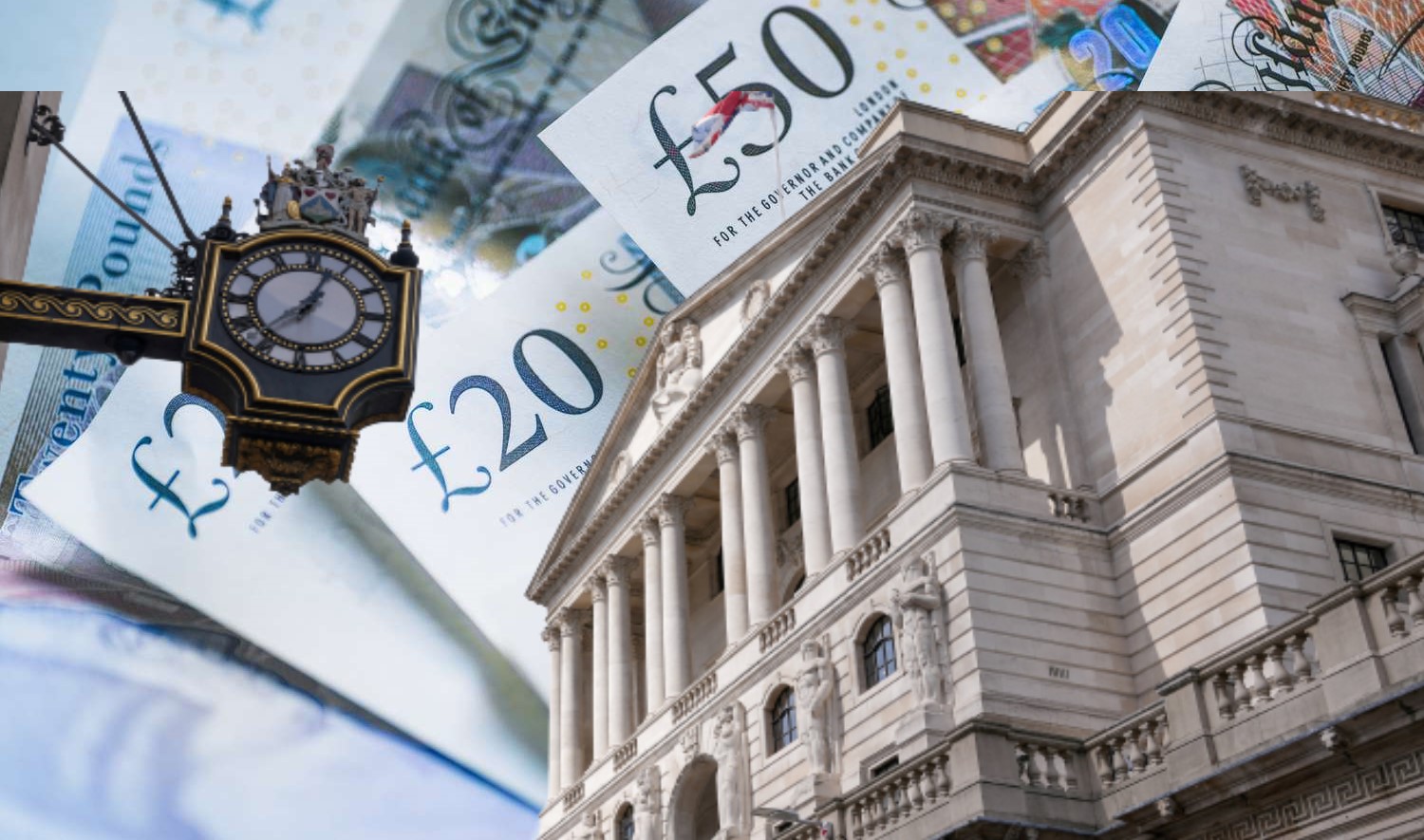
Bank of England Predicting 6% Increase For Mortgages
HSBC Raises Rates Amidst Bank of England's Predicted 6% Surge
HSBC's decision to raise mortgage rates for the second time in a week has added to the ongoing mortgage misery for British homeowners. The move comes as the market braces for further chaos, with the Bank of England expected to increase rates to 6 percent. The average five-year fixed-rate mortgage slightly decreased to 5.54 percent, while the two-year average remained unchanged at 5.9 percent. However, concerns about rising rates persist.
HSBC announced the withdrawal of mortgage deals from the market, affecting all new business residential mortgages offered through their broker services. The bank cited the need to maintain service levels and indicated that rates would rise again in the near future. This development follows HSBC's temporary withdrawal of all residential and buy-to-let new mortgage deals.
Mortgage holders are now facing higher repayment costs as the Bank of England contemplates raising interest rates on June 22 to control inflation. The markets indicate an 80 percent chance of the base rate reaching at least 5.75 percent later this year, and even a possibility of it reaching 6 percent, a level not seen since 2001.
Despite these concerns, there is some short-term positive news. Data reveals that average fixed-rate mortgage deals have not further increased toward the 6 percent mark. The average five-year fixed rate fell slightly to 5.54 percent, while the average two-year rate remained unchanged at 5.9 percent. Financial experts note that there is a greater variety of mortgage products available, with the count increasing from 4,917 to 5,018.
However, the past two weeks have been challenging for those seeking new mortgage deals. The average five-year rate has increased by 0.43 points since May 31, rising from 5.12 percent. Similarly, the two-year rate has gone up by 0.45 points in the same period, from 5.45 percent. The number of available products has increased by 23 during this time.
While some mortgage experts believe that rates offered by lenders may stabilize, others suggest that increases are still prevalent in the market. Average rates remain high, and it will be interesting to observe fluctuations in rates and availability in the coming weeks.
Rachel Springall, a finance expert at Moneyfacts, points out that the volatility in the mortgage market has subsided, with average rates no longer rising as dramatically. Residential product availability has also increased, surpassing 5,000 options. However, despite some lenders reducing selected fixed-rate mortgages, most changes observed in the market still involve rate increases. The next few weeks will be crucial in determining how rates and availability fluctuate.
Katy Eatenton, a mortgage and protection specialist at Lifetime Wealth Management, notes that it is unlikely that rates will decrease anytime soon, given recent rate increases by Coventry and HSBC. Meanwhile, Michelle Lawson, a mortgage and protection adviser at Lawson Financial, highlights the uncertainty surrounding future rate changes, citing notifications from HSBC and Foundation Home Loans about rate increases.
What Is Bank Of England Predicting For Mortgages?
Looking ahead, the Bank of England is expected to raise borrowing costs for the 13th consecutive time as a measure to address persistently high inflation. The markets indicate an over 80 percent chance that the base rate will hit at least 5.75 percent later this year, and could even reach 6 percent for the first time since 2001.
Financial data company Moneyfacts reports that the average rate for a new two-year fixed-rate mortgage has already reached 6.01 percent, the highest since December 1 and an increase from 5.98 percent. Similarly, the average five-year fixed rate has risen to 5.67 percent from 5.62 percent.
Most UK homebuyers opt for mortgages with fixed rates for two or five years, after which they transition to floating rates or refinance at a new fixed rate. Mortgage brokers indicate that rates can vary depending on borrowers' credit risk and loan size, with some customers still able to access 2-year fixed rates below 6 percent. However, this represents a contrast to just a few weeks ago when rates below 5 percent were available.
The impact of higher borrowing costs on mortgage holders is expected to be significant but has not yet been fully felt. UK Finance, an industry body, estimates that 800,000 fixed-rate mortgages will need to be refinanced in the second half of 2023, with a further 1.6 million in 2024 out of a total of approximately 9 million residential mortgages. The Resolution Foundation think tank predicts that the average mortgage holder refinancing next year will face an additional cost of £2,900 annually.
Prime Minister Rishi Sunak acknowledges the concerns about mortgage rates and emphasizes the importance of reducing inflation as a means to address rising borrowing costs. However, he does not offer any new support for borrowers struggling with mortgage payments. Government Minister Michael Gove also states that there are currently no plans to provide new assistance to borrowers.
The rising mortgage rates are already impacting house prices, as property website Rightmove reports a decrease in asking prices for the first time in six years. Typically, June sees a seasonal rise in house prices. Economists polled by Reuters predict that the Bank Rate will peak at 5 percent in August or September, up from the current 4.5 percent, but investors anticipate further increases. Interest rate futures suggest a slightly greater than 50 percent chance that Bank of England rates will reach 6 percent or higher in early 2024.
The rise in rates is also reflected in government bond yields, with two-year yields reaching 5 percent for the first time since July 2008. The cost of a two-year fixed-rate mortgage in the UK has surpassed 6 percent, while two-year gilt yields have breached the 5 percent mark for the first time in 15 years. This places additional pressure on homeowners and the government led by Rishi Sunak.
The increasing mortgage costs and the impending rate hikes present a significant challenge to homeowners. The withdrawal of cheaper mortgage deals by major lenders and the upward movement of interest rates have created an unfortunate situation. Simon Gammon, founder and managing partner at mortgage broker Knight Frank Finance, describes the trend as "hugely unfortunate" and predicts that homeowners, particularly the 1.4 million households remortgaging this year, will be taken aback by the high rates.
Moreover, the number of residential mortgage deals available in the market is also decreasing, which may limit options for borrowers. TSB, Co-operative Bank, Kensington Mortgages, and various building societies have withdrawn mortgage deals or raised rates. Buy-to-let mortgage rates have risen even faster than residential rates, with the average two-year fixed rate reaching 6.3 percent.
These developments are already affecting the economy and political landscape. With over 2.4 million fixed-rate homeowner deals expiring by the end of 2024, a significant number of homeowners face a substantial increase in monthly payments. This financial time bomb poses a challenge for the Conservatives as voters prepare to choose the next government. Economists at the Resolution Foundation warn that total annual home loan payments are projected to rise by £15.8 billion by 2026, with the average household facing a £2,900 blow when remortgaging next year.
The Bank of England is taking steps to mitigate the impact of future bond market disruptions on mortgages and business lending. Officials have initiated a new stress test of the financial system, subjecting banks, pension funds, and other institutions to hypothetical global economic crunches to assess their resilience. The aim is to prevent economic shocks in financial markets from adversely affecting the real economy. The stress test will examine the reactions of institutions to stress scenarios and identify potential risks, such as fire sales and vulnerable funds.
In conclusion, the recent mortgage rate hikes and the anticipated Bank of England rate increase have caused further distress for UK homeowners. The withdrawal of mortgage deals, the rise in borrowing costs, and the potential financial burden on households highlight the challenges faced by both homeowners and the government. The impact on the housing market, as well as the wider economy, is already evident.
















